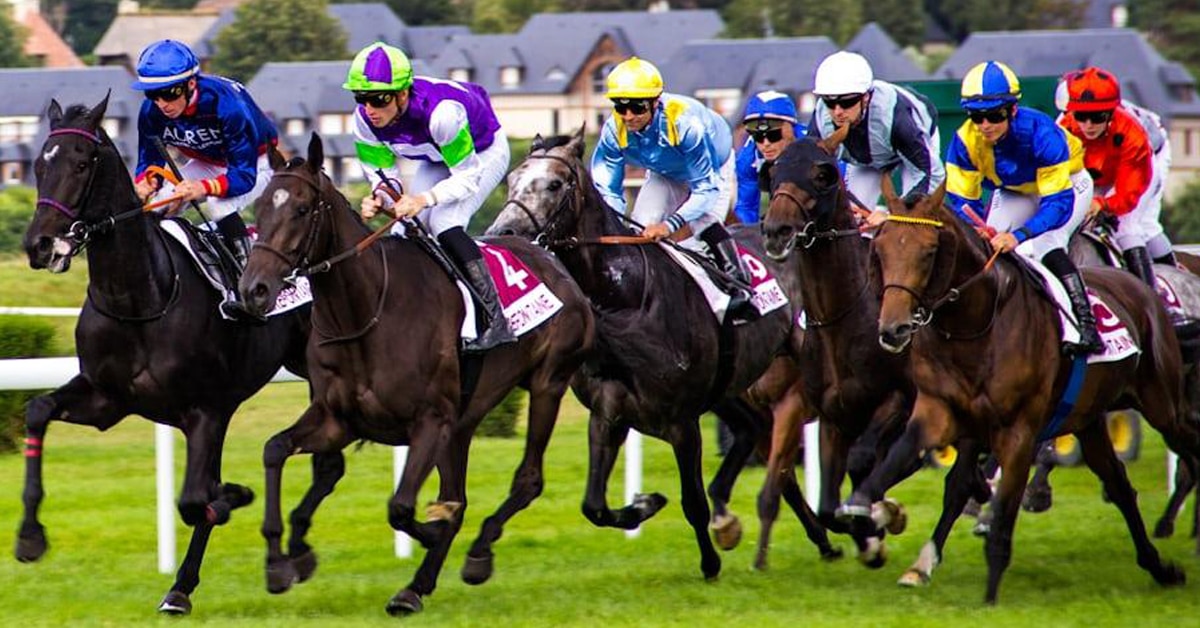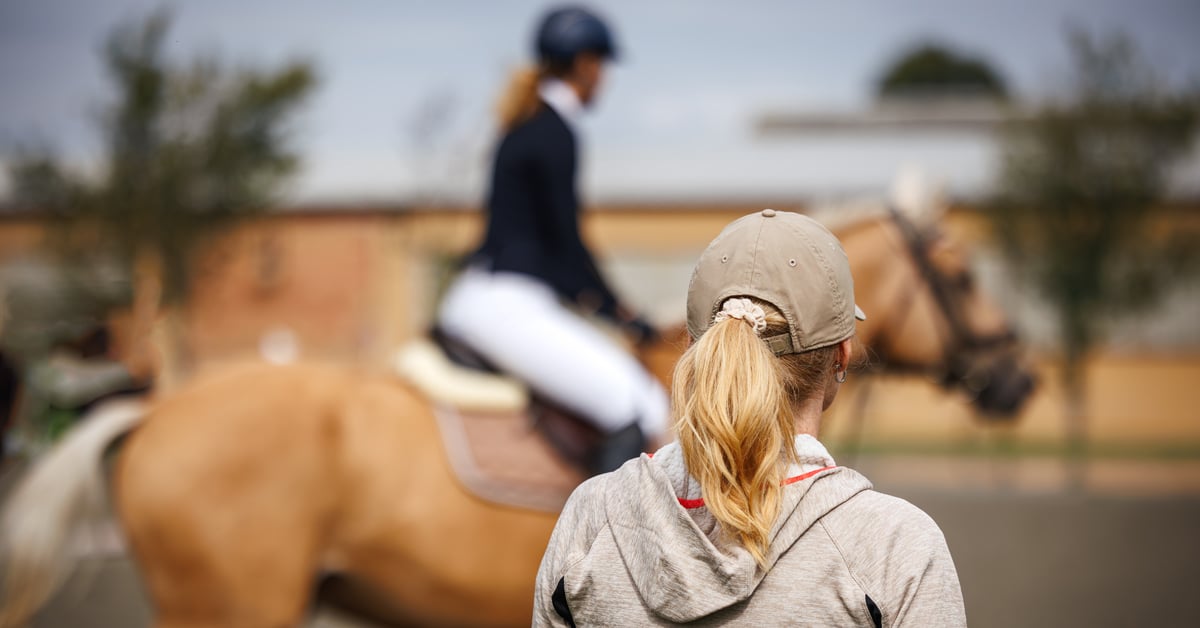There’s nothing new about Maritimers breeding horses; they’ve been doing it for generations. But lately they’ve upped the ante, producing beautiful, athletic performance horses that are able to compete in dressage, jumping, and competitive driving at the highest levels.
Breeding sport horses for show and pleasure is thriving in the Maritimes. There’s a wide range from Dutch Warmbloods to Thoroughbred crosses being raised and trained here by knowledgeable, dedicated horse people. Breeders sell locally as well as throughout Canada and are targeting the growing export market.
Most of the premier barns had startups in the last decade, although several have been in operation since the 1980s. Take Old Bull Farms, for example. In the rolling countryside near Windsor, NS, owners Paul Johnston, DVM, and his wife Jeannine DeLuca (also a veterinarian) breed and raise versatile warmbloods registered with the BWP (Belgian Warmblood studbook), with some eligible for other registries as well. Their herd numbers between 40 to 50 horses consisting of two young stallions, some 20 broodmares and a varying number of foals, yearlings, and two- and three-year-olds. Their four-year-old stallion, Iceburg (by Escudo I), received provisional approval as a breeding stallion from the BWP registry during the 2011 BWP Keuring. At the same inspection, two of their mares received the first and second-highest scorings and Lamaze, a 2011 colt, tied for the highest score in the North American foal division while Lenox was the high-scoring filly.
According to Johnston, rider and trainer Kevin Crosby shook up the breeding scene in Nova Scotia when he traveled to Belgium in the early 1980s looking for a grand prix prospect. He returned home with Bundspecht de Lauzelle, a young BWP stallion. Crosby not only competed with Bundspecht at venues including Spruce Meadows, but also stood him as a sire at his stables for many years. Bundspecht was prepotent (a sire who “stamps” his get with his most desirable characteristics) and crossed very well with the large base of excellent mare lines already established in the Maritimes. He produced exceptional offspring and left a significant legacy of many excellent hunters and show jumpers.
In those days, the revolutionary new reproductive technologies of artificial insemination using fresh cooled and frozen semen, as well as embryo transfers, were just coming on-stream. Maritime horse owners and breeders were quick to see the potential. Crosby and Johnston were on the leading edge, possibly the first Canadians to successfully use these technologies for breeding their mares to premium European stallions. “There is still probably more AI done on equines in the Maritimes per capita than anywhere else in North America,” says Johnston. But it has its disadvantages, too: collecting and shipping fresh cooled or frozen semen is expensive and can be technically complicated, because there’s only a six- to eight-hour window in which to breed a mare. However, “with AI you increase your odds of producing a fine foal,” he adds.
At her farm called Never Say Never, 20 minutes north of Halifax, Martha Haley has been using frozen semen from top European sires almost exclusively since 1999 with her outstanding mares – all of whom have been honoured at the KWPN keurings for both conformation and movement. The KWPN-NA registry has recognized Haley’s hard work and perseverance over the years, awarding her “Best Breeder of the Year” in 2009; the only Canadian to have ever won this title. “The award is a validation of my efforts to raise top-quality KWPN-registered sport horses with the potential of competing at Olympic levels,” says Haley.
The power of bloodlines
Maritime breeders study stallion bloodlines with an eagle eye. Johnston watches Spruce Meadows events with a computer on his lap, checking out sires of the jumpers that have caught his attention. Haley recites dressage genealogies going back several generations by heart. Jeannie Telstad, who with her husband raises rare Orlov Trotters, has taught herself enough Russian so that she is able to read and study their bloodlines. They all network; most make regular trips to breeding farms and stallion shows in Europe to watch the approved new sires and progeny of the top stallions. “The trick is to complement your mare’s qualities; filling in the gaps, stacking the odds in your favour,” says Haley. “Besides contributing fifty per cent of the genetics, the mare contributes other qualities like behaviour and temperament, too.”
Ken Mellish of New Perth Farms on Prince Edward Island agrees, adding, “The mare plays a vital role in the final foal ‘product’ – maybe more than 60% – because the dam is right there disciplining her foal’s behaviour and attitude until it is weaned.”
Sometimes too much is made of the stallion and too little of the quality of the dam line. Maritime breeders such as Johnston and Crosby are successful in part because they’ve been able to build on the base of the excellent mare lines already here. Others, like Marsha Voica, who operates a small breeding operation called Horses Unlimited, has gone another route: importing highly-rated KWPN mares from Holland to breed here with frozen semen from the stallions she believes will “nick” well with her mares.
The list of stallions currently used to artificially inseminate mares in the Maritimes reads like a who’s who of the sport horse world: Jazz, Florestan I, Gribaldi, Ferro, Baloubet Du Rouet, Voltaire Sandreo, Concorde, Clinton, Darco, Totilas, Heartbreaker, Indocus, and Donnerhall. But, cautions Haley, “A fabulous stallion with the “wow” movement does not necessarily mean a fabulous foal.” The judgment on Totilas as a prepotent sire, for example, is still out. His shipped semen is very reliable and the foals he has sired so far are gorgeous, but we have yet to see his get under saddle. After Totilas was sold to Germany in late 2010, his new owners made his frozen semen more readily available – but at a steep cost (8000€ a pop) relative to the going price of $1,000 to $2,000 a dose from other premium sires.
Veterinarian Bruce Robb, who runs a small and large animal practice in northern Nova Scotia, comments, “Breeding horses is such a gamble. You may make some money if you are the first to get a fancy stallion’s foals on the ground. But if everyone is using the same stallion, the market price of the foals he sired will soon decrease. Flooding the market with too much of the same thing simply lowers demand.”
Location, location?
Choosing the Maritimes to locate a horse breeding business has several advantages – the biggest being lower costs. Telstad, who relocated to rural Nova Scotia from Alberta, says: “We were able to buy an older farm with house, barn, pastures and ample acreage to grow our own hay for far less than in other parts of Canada. We could never afford what we have here in Calgary.”
“Prince Edward Island is a great place to raise horses,” says Ruth Hanselpacker, who breeds and trains Hanoverians with her partner, Nick Graham. “Our mares stay out 24/7 and the beautiful rural, agricultural countryside is great for hacking.” Another advantage is marketing. The Maritimes are closer to Europe and to the big market of the northeastern US than central Canada. “However you cut it, Halifax is nearer to the Boston area with its huge equestrian base than to Montreal or Toronto,” explains Johnson.
Mellish of New Perth Farm in PEI has no problem marketing his young Dutch warmbloods to all parts of North America. He sold one yearling sight unseen to grand prix dressage rider Andrea Taylor, Canadian para-dressage coach at the London 2012 Paralympics. “I bought Demarko NPF because of his bloodlines and because I want to support Canadian breeding farms. I’m really happy with my choice,” explained Taylor. Other New Perth Farm young stock have recently been sold to Evan Roberts, an eventer from Ontario, and to clients in Virginia where they are beginning to be shown in jumping and dressage.
Voica of Horses Unlimited has no trouble selling her KWPN-registered foals – who have been rated in the top five in the North American keurings – as soon as they are weaned. Many are bought sight unseen; location does not appear to be a major hindrance to marketing.
“Learning that the sport horses I have bred are very competitive in North American show rings – no matter where – is one of my greatest satisfactions,” says Crosby. He adds that in over 30 years of breeding and selling horses, only one has ever been returned. And that was because the client wanted a horse of another colour!
To be fair, there are disadvantages raising horses in the Maritimes, too. Presently there’s an over-supply of sport horses for the local market – meaning that there are too many top-quality horses and not enough professional riders or serious amateurs with the resources to buy and train them. Breeders are forced to market further afield, incurring an added long distance transportation cost for the buyer. Being so far from the epicentres of equine activity result in a lack of A-rated shows where young prospects can be shown, and breed registry inspections or keurings are not held often enough in the Maritimes. Basically, for breeders located in rural areas, the population base is so small that serious riders, trainers, equine veterinarians and facilities are few and far between.
For more exotic tastes
There are other less ‘mainstream’ breeds being raised in the Maritimes. One is the Spanish horse, or PRE (Pura Raza Espanola), from the province of Andalucía in southern Spain. It is a sport horse that can do it all: from grand prix dressage to stadium jumping, although its abilities are not particularly well-known by North American equestrians. Dos Companeros, a joint venture between Rachael Argo and Karen Pyra, is actively promoting this breed through raising and training Spanish horses on their farms in Nova Scotia. They have no problem marketing their foals; some are spoken for in utero.
There are less than a dozen registered purebred Russian Orlov Trotters in all of North America, but Jeannie and Lyle Telstad are striving to make sure this breed will become better-known and appreciated as a sport horse which excels in jumping, competitive driving, and dressage. The word “trotter” confuses people into thinking that this horse is suitable only for trotting races, but Alexandra Korelova placed fifth riding the Orlov Trotter Balagur at the 2008 Olympics. The Telstads stand an imported stallion, Zhuravlik, registered in the Russian Orlov stud book, and have four imported mares, all with impeccable bloodlines.
Selling in a soft market
Generally speaking, the market for selling horses has “softened,” meaning that many horses are being sold today for less than they were five or six years ago. Sport horse breeders carefully watch trends, such as colour and size preferences, to maximize sales. Black and dark bay are currently “in,” so breeders opt for the genetic combination that will most likely result in this colour. Considering that 80-90% of all North American riders are either females or juniors, some breeders are taking into consideration that smaller riders do not necessarily need large 17.1-hand mounts. “I am constantly trying to create a more refined 16.2 to16.3-hand horse,” says Paul Johnston.
The horse business is more competitive than ever. Profit margins are small considering all the financial costs, long hours of work and risks of losing a foal or mare. But with their passion and know-how, Maritime breeders are proving that they can produce international-calibre athletes on par with their North American and European counterparts.
The Latest











